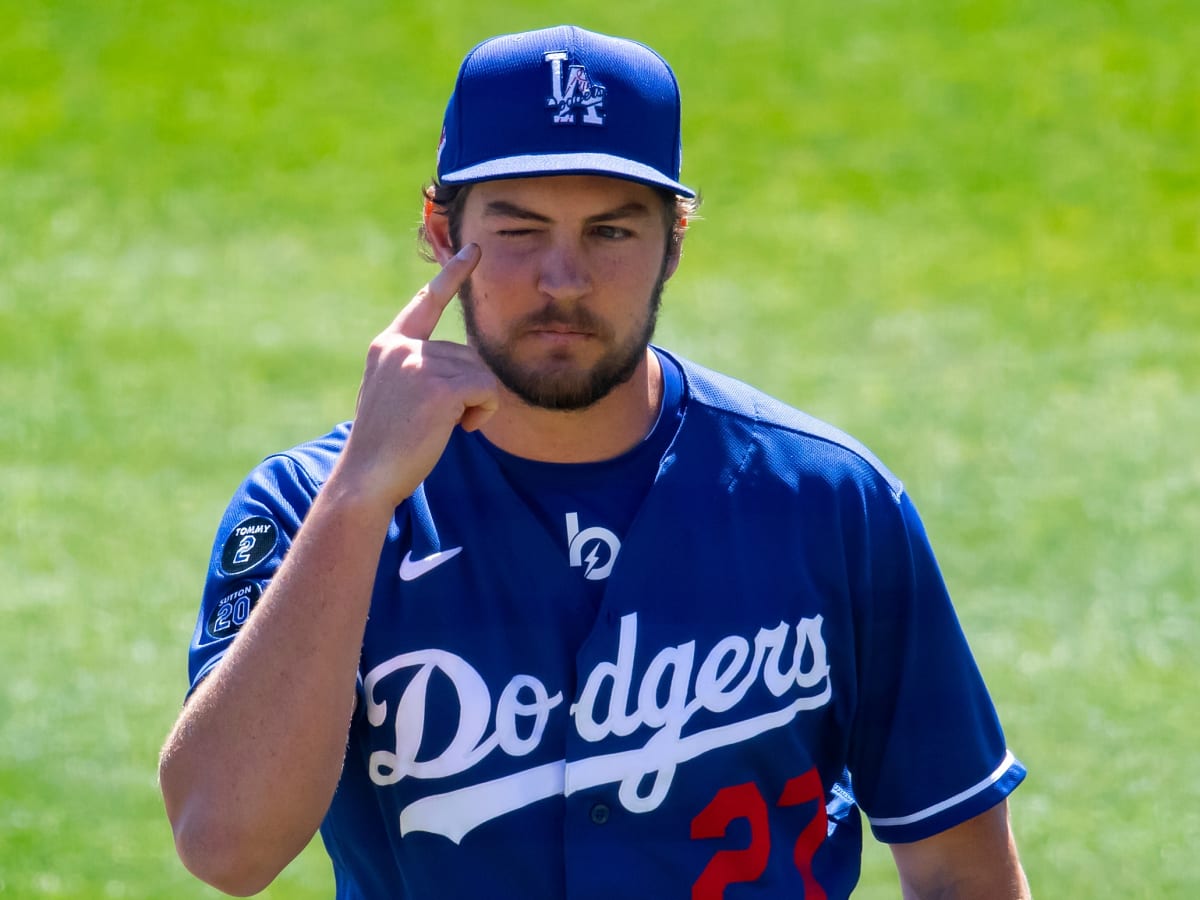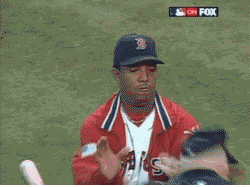If you close one eye and squint really hard, ignoring the haze from the fireworks of Tatis’ heroic five-homer weekend, you may be able to conjure up the hope of a breakout amongst your early season returns. From changed batted-ball profiles lighting up in dark red on Baseball Savant, to the befuddling excitement of attempting to wrap your mind around seam-shifted wake, to rookie breakouts that elicit comparisons far beyond their merit – the early season roster churn requires a level of qualified skepticism and spastic impulsivity which can make it feel like you’re pitching with one eye closed.

As the analysis of this game we love evolves, there are a litany of new angles to determine a player’s worth and true performance. However, without proper utilization this can just be a sinkhole of confirmation bias.
This is where the Legitmus Test comes in, a harbinger of hope in a world of misinformation and red herrings. I am here to decipher the underlying truth of this world of smoke and mirrors to drop your hopes of glory onto my paper of prognostication and ascertain the future. It’s an arguably impossible task I take on with the confidence of a 72-year-old Don Zimmer charging Pedro Martinez. Into the void we go.

An unscrupulous fantasy owner may have investigated the hype on Rogers entering 2021 only to find a stat line more worthy of the alternate site than your fantasy roster:
![]()
Herein lie the perils of small sample size. Digging deeper, Rogers had two dreadful starts during his seven game cup of coffee in the bigs, where he allowed a total of 13 ER in seven innings. In his other five starts, you’ll find an impressive rookie pitcher compiling a 2.57 ERA and a 1.24 WHIP with a 32% K rate, hitting a high of 10 Ks during a six-inning start vs. Tampa Bay. Now the hype makes more sense.
As a 6-foot-6 lefty with a fastball touching 96 mph, Rogers has always been slapped with the projectable label at worst. Questions regarding the effectiveness of Rogers’ secondary pitches have persisted since he was drafted #13 overall in 2017. Interestingly, I don’t think these questions are totally settled, as his secondary arsenal (featuring a slider and changeup) is still evolving, as seen through his changed repertoire since last year:

Although some may perceive this as a negative in Rogers’ profile, there is alternatively room to dream on what Rogers may look like if he can continue to improve his secondary pitches. Regardless, his secondary offerings are mere accents to Rogers’ undeniably elite fastball, currently leading the league in whiff rate at 38.7% (second is deGrom at 37.6%). All told, there is room to ride the helium of this hot air balloon to dreams of fantasy Titletown.
Obviously, with a .250 BABIP and 0.41 HR/9, regression is coming for his sparkling 2.37 ERA, but Trevor Rogers is here to stay as a solid season-long SP asset with upside. Although April victory laps are frowned upon, I’m willing to plant my flag that this breakout for the recent #13 overall pick with elite K rates and a fastball rivaling the game’s best is:
LEGIT
From a 23-year-old first-round pick hitting his stride as he adapts to the bigs to one of the stranger breakouts I can recall in recent memory, I bring you your current league leader in runs scored: Mark Canha. A 32-year-old with a six-year track record should be a known commodity, and Mark Canha’s profile entering the season was that of a low-end, volume-based OBP stabilizer with a great walk rate, end-of-roster power (topping out at 26 HRs in 2019), and little to no SB potential, with a six-year average of three stolen bases per season.
But, this is a story of opportunity, as the departure of Marcus Semien left an unfilled leadoff spot atop the A’s lineup. To fill that hole, the Athletics saw an overlooked asset in Canha, who showed a changed approach at the plate to lead the team in BB% in 2019 and continued those gains to a fantastic 15.2 BB% in 2020.
As the great philosopher Q-Tip queries, “Can I Kick it?,” Mark Canha kicked up the dust in between the base paths on his way to an unanticipated yet well-supported breakout. Less than a month into the season, Canha has tied his second-best full season total of stolen bases with four through his first 21 games. Although it would be easy to write this off as a small sample size mirage, there is reason to believe Canha can continue this pace to become a legitimate stolen base asset for your teams.
Canha is currently ranked 67th in baseball with a sprint speed of 27.8 Ft/s. Surprisingly, he has lived within this range for the last five seasons. To contextualize this, consider the sprint speeds of known stolen base assets like Jean Segura (also at 27.8) and Starling Marte (27.6), and it is now painstakingly clear that Canha has some wheels and the A’s intend to use them. Conservatively I think there is legitimate room to suggest a 25 HR/15 SB season could be in the cards, and because that conservative take is already so enticing, I will let those who roster Canha dream about a ceiling that could make him one of the best draft day buys.
Although I don’t anticipate Canha will finish the season leading the league in runs, he was clearly an undervalued asset in the category on draft day. His current league-leading runs are largely buoyed by his lineup successor Jed Lowrie’s simultaneous hot streak. Supplementing his newfound value in runs and stolen bases, Canha has proven to be a solid contributor in OBP, and assuming he can reach close to the 26 HR power he displayed in 2019, you’ve got a well-rounded fantasy asset who is breaking out at an age-defying 32 years old. Assuming the wheels keep turning, this breakout seems:
LEGIT
Tyler Mahle is a 26-year-old SP who has raised his K/9 every season, from 8.84 in his first season of significant action in 2018 to the current 13.5 K/9 he is sporting early this year. Mahle’s early season returns with an elite K rate, a 1.74 ERA and a 2.81 FIP, which suggest a breakout that was calculated by a myriad of fantasy experts. As logic goes, this one seems to check all the boxes.
However, there are signs that Mahle is more of a sell-high candidate than a sudden top of the rotation SP. Primarily, Mahle’s early-season success has come against the Diamondbacks twice without Ketel Marte (a combined 10.2 shutout innings with 15 Ks), the Giants (5 innings, 2 ER, 7 Ks) and the Cardinals (5 innings 2 ER, 9 Ks). With three of four starts against relatively below-average offenses, it should come as no surprise that Mahle seems to be reaching new highs. Furthermore, Mahle is currently registering a .189 BABIP, an 86.4 LOB% and a 0.87 HR/9, which are all significantly better than his track record would suggest, even with the rosiest of outlooks.
More to this point, Mahle’s pitch mix doesn’t suggest any large-scale change that would support a breakout of the sort that his current returns suggest:

Although he has increased his fastball velocity by 0.8 mph, the whiff rate on his fastball and slider, which together make up 88% of his arsenal, are actually down from his 2020 totals. Further, he is throwing his three-pitch mix at eerily similar rates as he has in the past. He has increased the whiff rate on his split-finger considerably, from 22.2% to 47.4%, but given he has only thrown the pitch 43 times (the exact same 11.7% of his arsenal it was in 2020) and the small gains he has with velocity and spin rate on the pitch don’t mirror the large change in whiff rate. I don’t think this trend will continue.
Mahle is having trouble going deep into games, which continues to limit his ceiling in both wins and quality starts. Last season, Mahle only reached 6 IP in four of his nine starts and went three innings or less in four of those nine starts as well. This season, Mahle has only reached 6 IP in one of his four starts. Even with a high K rate, the continued inability to reach the W or QS threshold will keep Mahle from being a true top-of-the-line SP in fantasy leagues.
With all that said, Mahle is a fine mid-level rotation asset with a solid K/9 that suggests he should hold value all season. However, his current performance, anticipated breakout, breakout age and level of competition create the perfect storm to make him an ideal sell-high candidate. As such, Mahle is better suited for the SP 3-5 range on fantasy rosters than the hopeful breakout that some have already championed as complete. Accordingly, if you are a Mahle owner I would capitalize on this moment to sell high before Mahle starts against the Dodgers.
NOT LEGIT
Featured image by Justin Redler (@reldernitsuj on Twitter)


I have a few shares in Mahle. Who is an ideal 12-teamer buy-low target?
Is a guy like Luis Castillo a target?
Yes, definitely I think Castillo is the perfect buy low for Mahle.
On the batters end I’d kick the tires on Ozzie Albies.
Great stuff again, Sami. Yours has quickly become one of my favorite columns on PL.